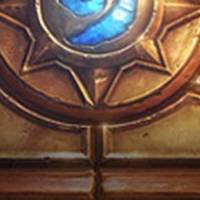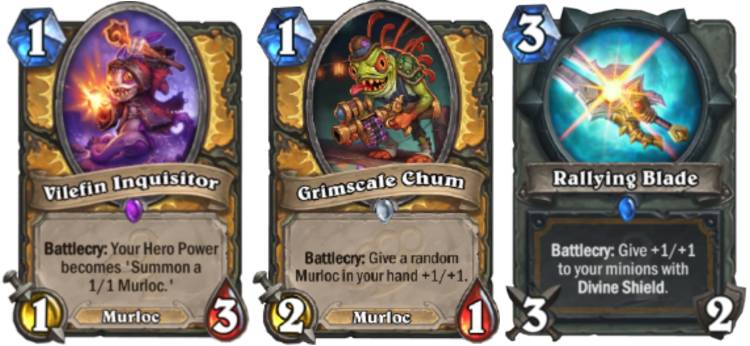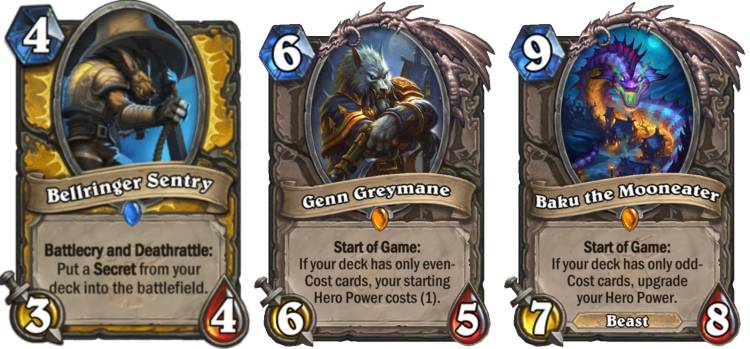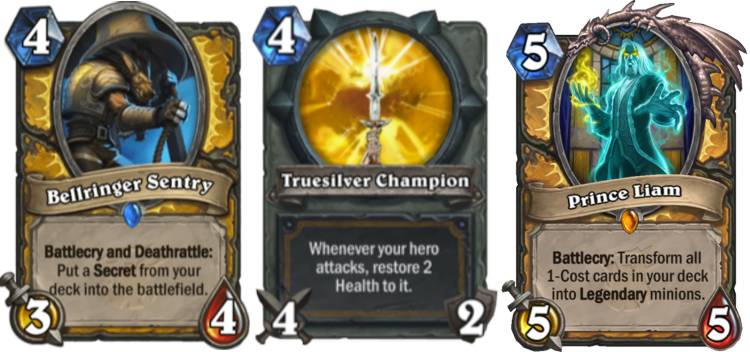
Hearthstone: Heroes of Warcraft
Hearthstone: The Witchwood, Paladin Deck Building Guide
Hearthstone: Heroes of Warcraft Guide
Welcome back citizens of Azeroth. Join us as we delve into the world of Hearthstone once more. This time, we shall provide a Paladin Deck Building Guide for those who want to defend the light. There is something for players new and old. So, why stay awhile and take a look.
Standard Rotation
What cards have rotated out of standard due to the Year of the Raven?

Before the release of The Witchwood, Paladin was tiered at the top with a Murloc arsenal. Whether it was aggro or mid-range, the class had a steady foothold on in the meta. Constant pressure from turn one and ample amounts of steam allowed this class to shine in the light.
However, since the Year of the Mammoth has passed how does the class fair? Cards such as Vilefin Inquisitor, Grimscale Chum, and Rallying Blade are no longer available. These cards were crucial for early game dominance. Not only that but, they provide survivability for your minions. This is a mostly a board control game after all.
Other cards, albeit not as highly tiered, are the widespread hand buffs. Smuggler’s Run, Grimestreet Outfitter, and Grimestreet Enforcer all buffed the minions in your hand. Having overpowering minions was very threatening. The potential to eat up multiple opposing cards is very valuable. But, now that these buffs are gone, can the class still remain at the top?
Witchwood Cards

With the introduction of The Witchwood, support for Aggro Paladin comes at its darkest hour. Not only that, but the bells ring for a flavour of the past. Genn Greymane and Baku The Mooneater provide the class with effective Hero Power support. As for the Bellringer Sentry, memories of Mysterious Challenger, from The Grand Tournament, and Mad Scientist, from Naxxramas.
For the odd and even decks, the power up for the Hero Power is very valuable. For the odd deck, pumping out two 1/1 Silver Hand can quickly overwhelm the opponent. There are only so many board wipes you can unload and it is significantly lower than unlimited Hero Power clicks. The new Weapon, Silver Sword, and Classic Weapon Sword of Justice, can ensure your board starts with more clout.
For the lover of Secrets, Bellringer Sentry can provide disruption to the opponent’s tactics. Noble Sacrifice, Getaway Koda, and Redemption allows for your board to stay mostly intact. Repentance, however, makes sure that big minions from your opponent are taught a lesson in humility. These “free” Secrets are useful tools in the battle for the board. The more control over it you have the more damage you can inflict.
Decks to Try, Budget and Competitive
Aggro Paladin

The first deck that we are going to delve into is Aggro Paladin. Many iterations of this deck have come and gone since the release of the game. Unsurprisingly, it continues to influence new and old players alike. Early game cards such as Fire Fly, Glacial Elemental, Argent Squire, Dire Mole, Lost in the Jungle, and Righteous Protector are all useful in applying pressure. The main drive for this deck is board presence. By utilising the plethora of one cost cards it is easily done.
Moving on to post turn one plays, it’s time to buff and push. Blessing of Might and Raid Leader grant more attack power to your minions. Using this you can hit hard for board control or to the opponent’s face. Combined this with Unidentified Maul, for further minions buffs and board control, and Divine Favour. This way, you can empty your hand onto powerful swings then refill up to the size of the opponents hand. This is great against late game and slower decks.
For the competitive players out there, consider throwing in a Genn Greymane or Baku the Mooneater. Having a reduced cost Hero Power from Genn ensures you can keep pressing the button turn after turn. Combining that will all the Silver Hand support, such as Drygulch Jailor and Lightfused Stegodon, Even Paladin can pose a real threat. As for Odd Paladin, pumping out two Silver Hand per button press can quickly cascade out of control if the opponent isn’t careful. Utilising Level Up! to buff all your Silver Hand by +3/+3 and giving them Taunt is very valuable.
Secret Paladin

Moving onto something that involves Secrets, and lots of them. In the past, Secret Paladin sat comfortably at tier 1 with the release of The Grand Tournament and Mysterious Challenger. Although those days are long gone, The Witchwood pays tribute to the past with Bellringer Sentry. This 4 cost 3/4 plays a Secret from your deck with it’s Battlecry and Deathrattle. Its like Worgen little brother of Mysterious Challenger. So know you can disrupt your opponents tactics earlier.
To compliment this strategy, consider adding early game minions such as Argent Squire, Righteous Protector, and Secret Keeper. If you can keep control of the board as you play Bellringer, you have a good advantage on your side for the upcoming turns. Support your efforts with classic cards such as Truesilver Champion and Consecration. Keep pushing, keep controlling, and keep up the pressure. For the late game, options such as big Taunt minions just in case you need to stabilise, or Charge minions for more tempo/finishers.
For the competitive circuit, there are few options to improve the deck. Sunkeeper Tarim is a staple in most Paladin decks. Reducing the power of the opposing board whilst buffing you Silver hand is great. Also, Prince Liam will switch things up for the late game. By ridding yourself of your 1 cost cards, they will transform into a random Legendary minion. Accessing Tyrion Forgering and Lord Godfrey for stabilisation or, Leeroy Jenkins and Azalina Soulthief for finishers and more fuel. These options can clinch you the game.
And there we have it Hunters of Gilneas. Tune in soon as we delve into the pious Priest class next time. If you haven’t done so already, please check our other Hearthstone Articles. Until next time, smile and game.